Immunopathogenesis of Orthopoxviridae: insights into immunology from smallpox to monkeypox (mpox)
Since 2019, notable global viral outbreaks have occurred necessitating further research and healthcare system investigations. Following the coronavirus disease 2019 (COVID-19) pandemic, in 2022, whi
[...] Read more.
Since 2019, notable global viral outbreaks have occurred necessitating further research and healthcare system investigations. Following the coronavirus disease 2019 (COVID-19) pandemic, in 2022, whilst severe acute respiratory syndrome coronavirus 2 (SARS-CoV-2) strains evolved, monkeypox virus (MPXV) infections became more evident. MPXV is of the Orthopoxviridae genus, belonging to the family Poxviridae. Zoonotic transmission (animal-to-human transmission) may occur. The Orthopoxviridae genus includes other orthopoxviruses (OPXVs) present in animal host reservoirs that include cowpox viruses (CPXVs), vaccinia virus (VACV), and variola virus (VARV), with the latter being a causal agent of smallpox and excessive mortality. This review aims to present facts about MPXV-specific pathogenesis, epidemiology, and immunology alongside historical perspectives. MPXV was rarely reported outside Africa before April 2000. Early research since 1796 contributed towards the eradication of VARV leading to immunisation strategies. The World Health Organisation (WHO) announcement that VARV had been eradicated was confirmed in 1980. On the 23rd of July 2022, the WHO announced MPXV as a health emergency. Therefore, concern due to the propagation of MPXV causing monkeypox (mpox) disease requires clarity. Infected hosts display symptoms like extensive cellular-initiated rashes and lesions. Infection with MPXV makes it difficult to differentiate from other diseases or skin conditions. Antiviral therapeutic drugs were typically prescribed for smallpox and mpox disease; however, the molecular and immunological mechanisms with cellular changes remain of interest. Furthermore, no official authorized treatment exists for mpox disease. Some humans across the globe may be considered at risk. Historically, presenting symptoms of mpox resemble other viral diseases. Symptoms include rashes or lesions like Streptococcus, but also human herpes viruses (HHVs), including Varicella zoster virus (VZV).
Brent Brown ... Enrique Chacon-Cruz
Since 2019, notable global viral outbreaks have occurred necessitating further research and healthcare system investigations. Following the coronavirus disease 2019 (COVID-19) pandemic, in 2022, whilst severe acute respiratory syndrome coronavirus 2 (SARS-CoV-2) strains evolved, monkeypox virus (MPXV) infections became more evident. MPXV is of the Orthopoxviridae genus, belonging to the family Poxviridae. Zoonotic transmission (animal-to-human transmission) may occur. The Orthopoxviridae genus includes other orthopoxviruses (OPXVs) present in animal host reservoirs that include cowpox viruses (CPXVs), vaccinia virus (VACV), and variola virus (VARV), with the latter being a causal agent of smallpox and excessive mortality. This review aims to present facts about MPXV-specific pathogenesis, epidemiology, and immunology alongside historical perspectives. MPXV was rarely reported outside Africa before April 2000. Early research since 1796 contributed towards the eradication of VARV leading to immunisation strategies. The World Health Organisation (WHO) announcement that VARV had been eradicated was confirmed in 1980. On the 23rd of July 2022, the WHO announced MPXV as a health emergency. Therefore, concern due to the propagation of MPXV causing monkeypox (mpox) disease requires clarity. Infected hosts display symptoms like extensive cellular-initiated rashes and lesions. Infection with MPXV makes it difficult to differentiate from other diseases or skin conditions. Antiviral therapeutic drugs were typically prescribed for smallpox and mpox disease; however, the molecular and immunological mechanisms with cellular changes remain of interest. Furthermore, no official authorized treatment exists for mpox disease. Some humans across the globe may be considered at risk. Historically, presenting symptoms of mpox resemble other viral diseases. Symptoms include rashes or lesions like Streptococcus, but also human herpes viruses (HHVs), including Varicella zoster virus (VZV).
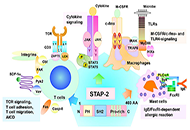 Potential therapeutic applications of targeting signal-transducing adaptor protein-2 in autoimmune diseasesOpen AccessPerspectiveAdaptor proteins are involved in various immune responses via the modulation of many signaling pathways. Signal-transducing adaptor protein-2 (STAP-2) is an adaptor protein that contains typical dom [...] Read more.Yuto Sasaki ... Tadashi MatsudaPublished: December 28, 2023 Explor Immunol. 2023;3:604–612
Potential therapeutic applications of targeting signal-transducing adaptor protein-2 in autoimmune diseasesOpen AccessPerspectiveAdaptor proteins are involved in various immune responses via the modulation of many signaling pathways. Signal-transducing adaptor protein-2 (STAP-2) is an adaptor protein that contains typical dom [...] Read more.Yuto Sasaki ... Tadashi MatsudaPublished: December 28, 2023 Explor Immunol. 2023;3:604–612 High percentage of blood-based T-cell receptor gamma V9-JP recombinations associated with amyotrophic lateral sclerosis: extensive retention of the JP KKIK amino acid motifOpen AccessCommentaryExome and RNAseq files prepared from blood samples can be mined for adaptive immune receptor recombinations and thus for the complementarity determining region-3 (CDR3) amino acid (AA) sequences, im [...] Read more.George Blanck ... Joanna J. SongPublished: December 22, 2023 Explor Immunol. 2023;3:598–603
High percentage of blood-based T-cell receptor gamma V9-JP recombinations associated with amyotrophic lateral sclerosis: extensive retention of the JP KKIK amino acid motifOpen AccessCommentaryExome and RNAseq files prepared from blood samples can be mined for adaptive immune receptor recombinations and thus for the complementarity determining region-3 (CDR3) amino acid (AA) sequences, im [...] Read more.George Blanck ... Joanna J. SongPublished: December 22, 2023 Explor Immunol. 2023;3:598–603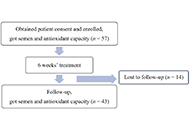 Ningmitai capsule improves the semen quality of male infertile with chronic prostatitis by antioxidant and anti-inflammatoryOpen AccessOriginal ArticleAim: To observe the effects of Ningmitai capsule on semen parameters of infertile patients with chronic prostatitis (CP) and explore the mechanisms. Methods: A total of 43 patients diagnose [...] Read more.Xiaoyu Wu ... Xinzong ZhangPublished: December 14, 2023 Explor Immunol. 2023;3:590–597
Ningmitai capsule improves the semen quality of male infertile with chronic prostatitis by antioxidant and anti-inflammatoryOpen AccessOriginal ArticleAim: To observe the effects of Ningmitai capsule on semen parameters of infertile patients with chronic prostatitis (CP) and explore the mechanisms. Methods: A total of 43 patients diagnose [...] Read more.Xiaoyu Wu ... Xinzong ZhangPublished: December 14, 2023 Explor Immunol. 2023;3:590–597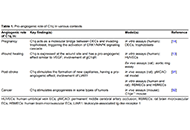 The role of complement component C1q in angiogenesisOpen AccessReviewThe complement component C1q plays a role as a pro-angiogenic factor in different contexts, acting in a complement-independent way. For example, this molecule is able to foster the remodeling of the [...] Read more.Mariagiulia Spazzapan ... Roberta BullaPublished: December 14, 2023 Explor Immunol. 2023;3:574–589
The role of complement component C1q in angiogenesisOpen AccessReviewThe complement component C1q plays a role as a pro-angiogenic factor in different contexts, acting in a complement-independent way. For example, this molecule is able to foster the remodeling of the [...] Read more.Mariagiulia Spazzapan ... Roberta BullaPublished: December 14, 2023 Explor Immunol. 2023;3:574–589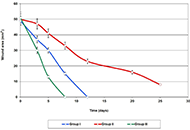 Treatment of a non-healing oral wound in diabetic-induced ratsOpen AccessOriginal ArticleAim: Non-healing wounds are one of the most substantial and difficult problems to treat. Wound healing involves a sequence of complex biological processes, but often the oral cavity microbiota ad [...] Read more.Lia Karalashvili ... Zurab KakabadzePublished: December 08, 2023 Explor Immunol. 2023;3:565–573
Treatment of a non-healing oral wound in diabetic-induced ratsOpen AccessOriginal ArticleAim: Non-healing wounds are one of the most substantial and difficult problems to treat. Wound healing involves a sequence of complex biological processes, but often the oral cavity microbiota ad [...] Read more.Lia Karalashvili ... Zurab KakabadzePublished: December 08, 2023 Explor Immunol. 2023;3:565–573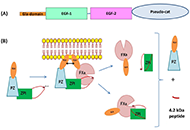 An update on anti-protein Z antibodiesOpen AccessReviewProtein Z (PZ) is a vitamin K-dependent protein that acts as a cofactor for the inhibition of activated factor X by the PZ-dependent protease inhibitor, an anticoagulant protein of the serpin superf [...] Read more.Tiffany Pascreau ... Marc VassePublished: December 05, 2023 Explor Immunol. 2023;3:554–564
An update on anti-protein Z antibodiesOpen AccessReviewProtein Z (PZ) is a vitamin K-dependent protein that acts as a cofactor for the inhibition of activated factor X by the PZ-dependent protease inhibitor, an anticoagulant protein of the serpin superf [...] Read more.Tiffany Pascreau ... Marc VassePublished: December 05, 2023 Explor Immunol. 2023;3:554–564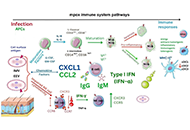 Immunopathogenesis of Orthopoxviridae: insights into immunology from smallpox to monkeypox (mpox)Open AccessReviewSince 2019, notable global viral outbreaks have occurred necessitating further research and healthcare system investigations. Following the coronavirus disease 2019 (COVID-19) pandemic, in 2022, whi [...] Read more.Brent Brown ... Enrique Chacon-CruzPublished: November 21, 2023 Explor Immunol. 2023;3:525–553
Immunopathogenesis of Orthopoxviridae: insights into immunology from smallpox to monkeypox (mpox)Open AccessReviewSince 2019, notable global viral outbreaks have occurred necessitating further research and healthcare system investigations. Following the coronavirus disease 2019 (COVID-19) pandemic, in 2022, whi [...] Read more.Brent Brown ... Enrique Chacon-CruzPublished: November 21, 2023 Explor Immunol. 2023;3:525–553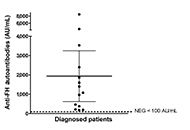 Anti-factor H autoantibody-associated hemolytic uremic syndrome in an Argentine pediatric cohortOpen AccessOriginal ArticleAim: To describe the clinical characteristics and frequency of anti-factor H (FH) autoantibody-associated atypical hemolytic uremic syndrome (aHUS) in the first cohort of Argentine patients. [...] Read more.Célia Dos Santos ... Analía Sánchez-LucerosPublished: November 10, 2023 Explor Immunol. 2023;3:513–524
Anti-factor H autoantibody-associated hemolytic uremic syndrome in an Argentine pediatric cohortOpen AccessOriginal ArticleAim: To describe the clinical characteristics and frequency of anti-factor H (FH) autoantibody-associated atypical hemolytic uremic syndrome (aHUS) in the first cohort of Argentine patients. [...] Read more.Célia Dos Santos ... Analía Sánchez-LucerosPublished: November 10, 2023 Explor Immunol. 2023;3:513–524